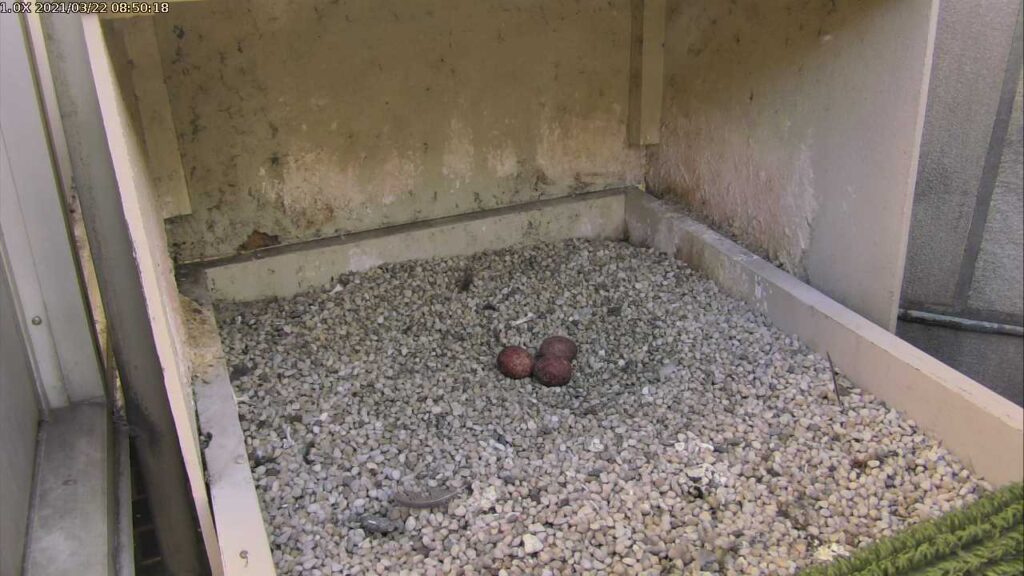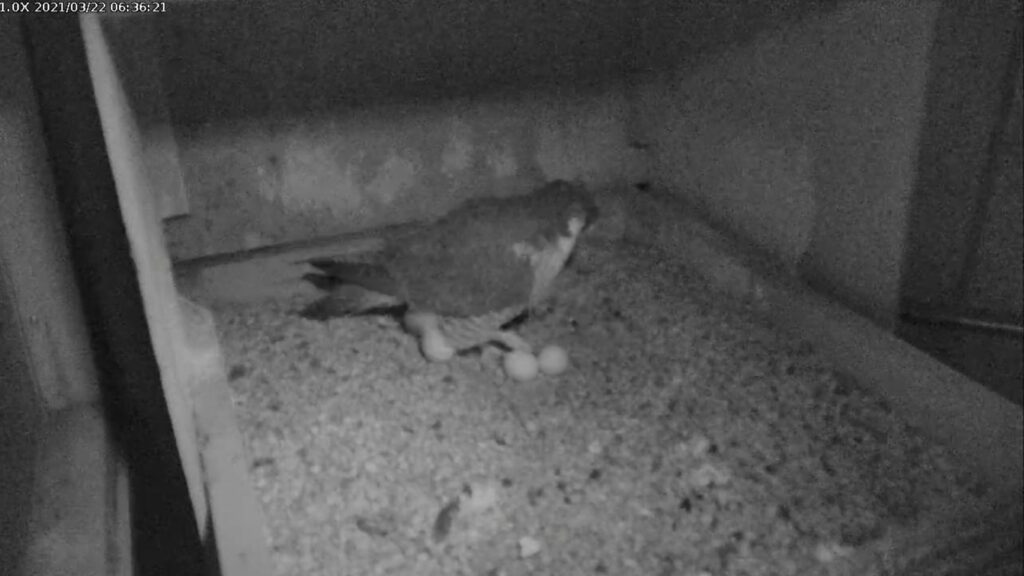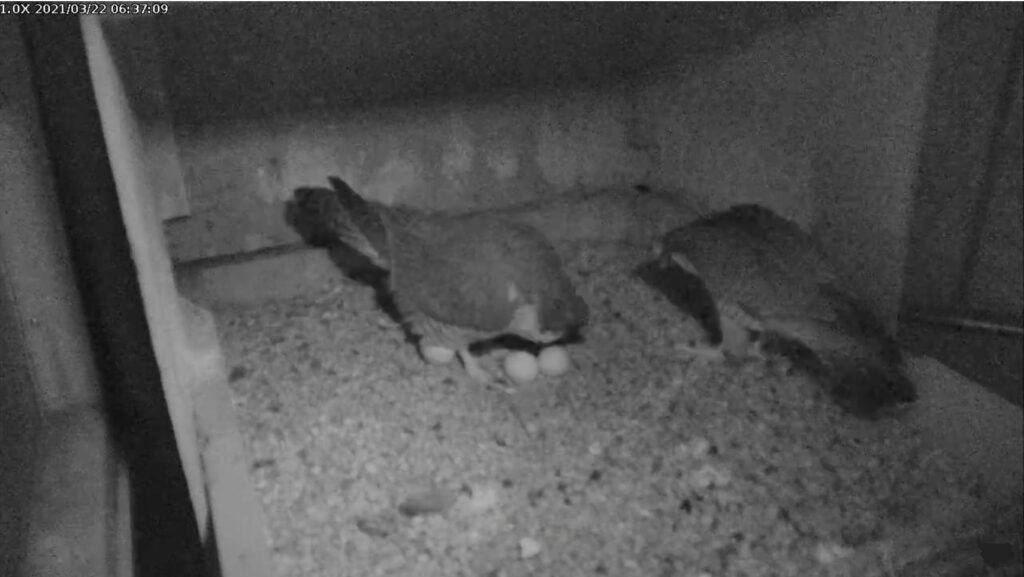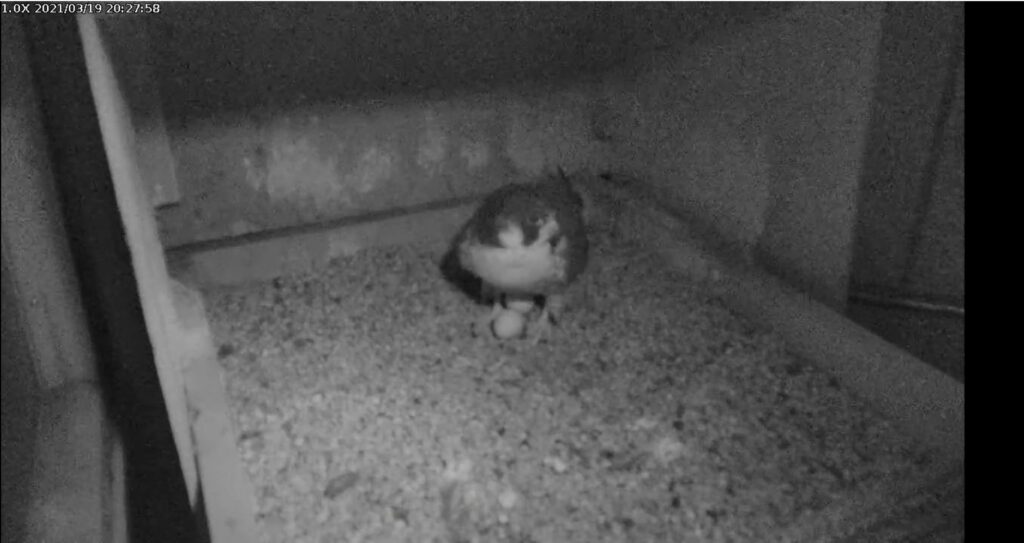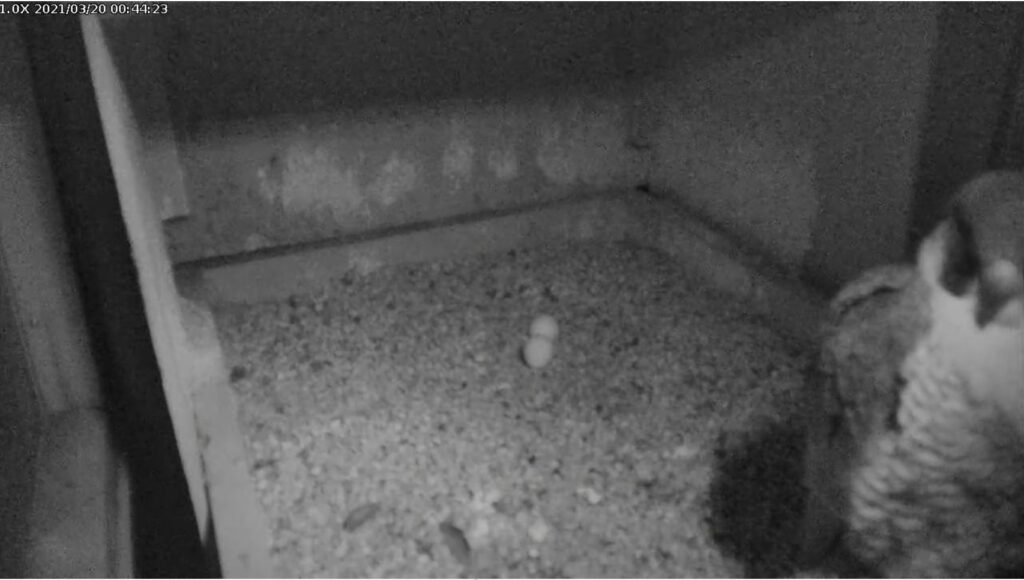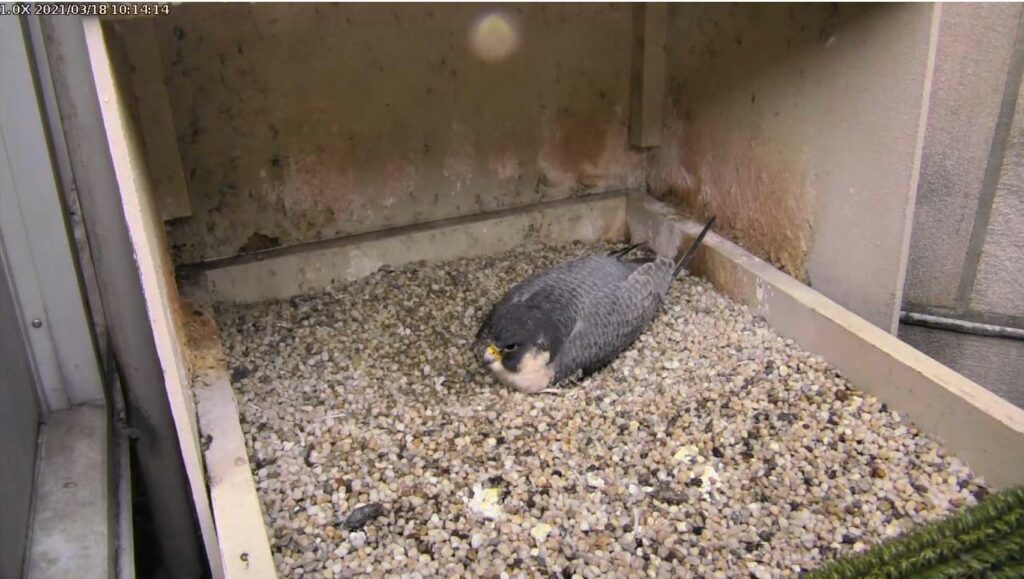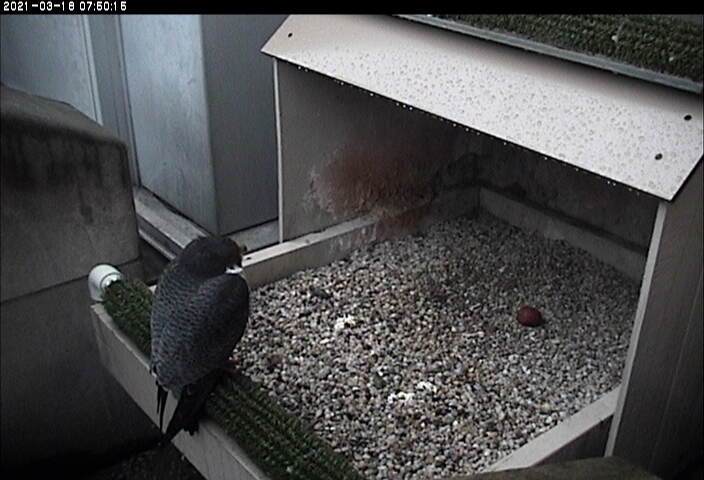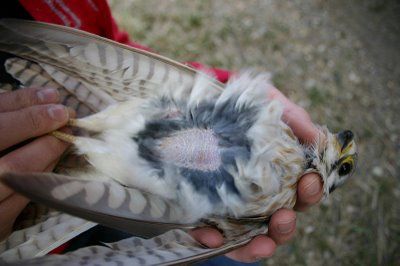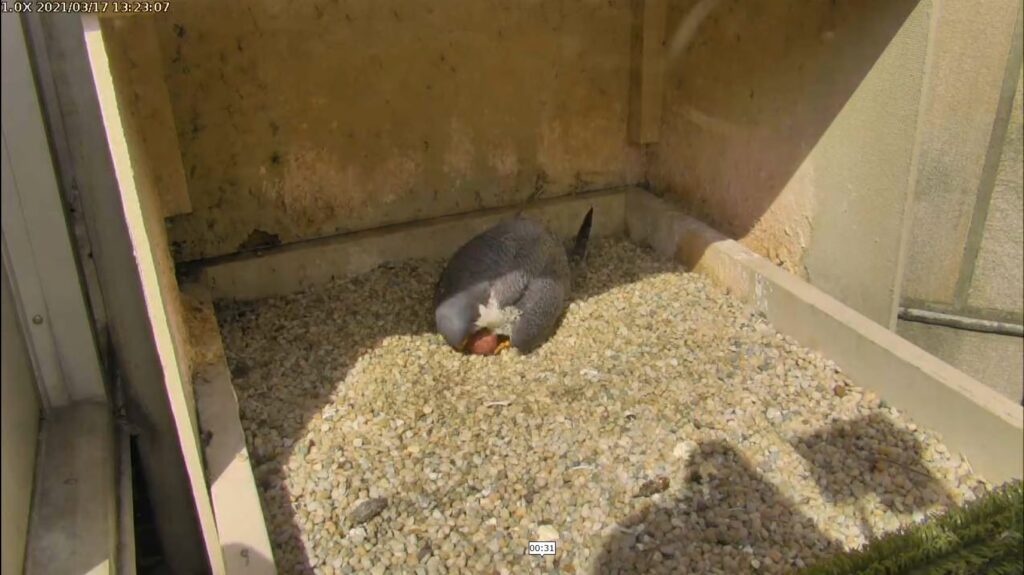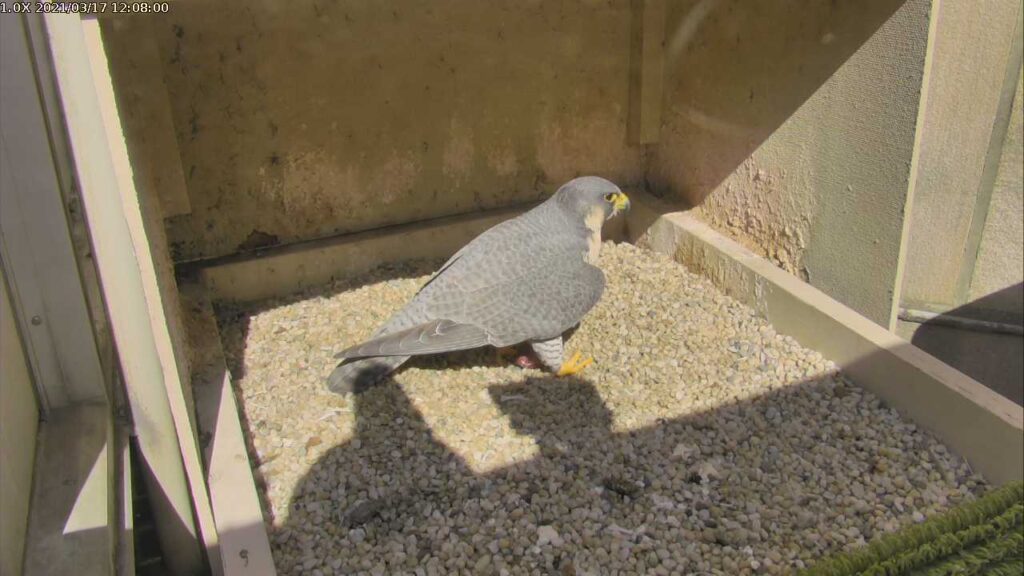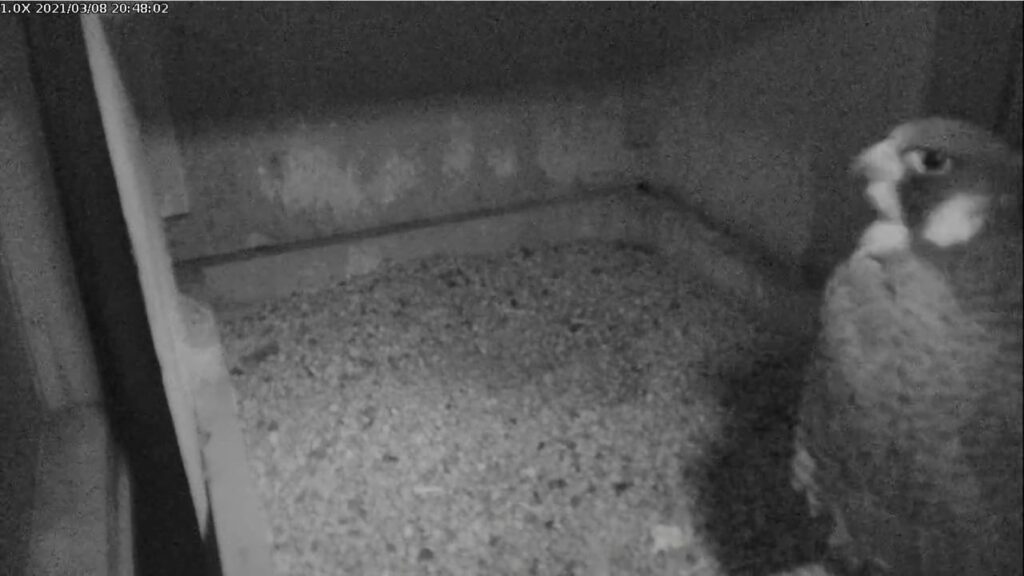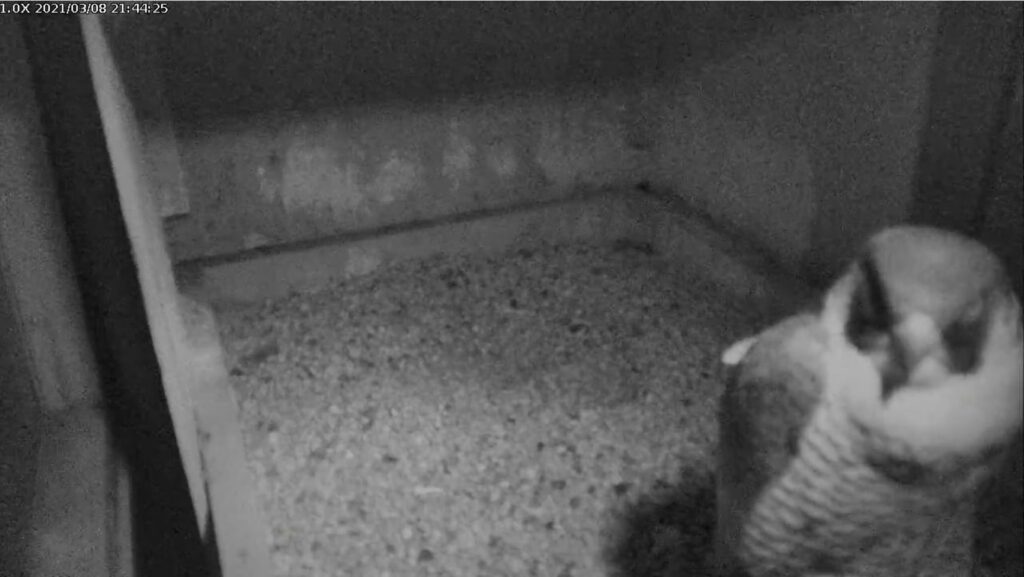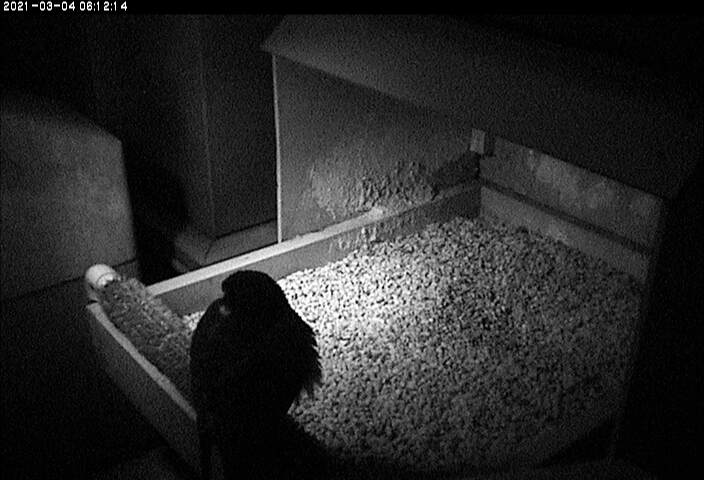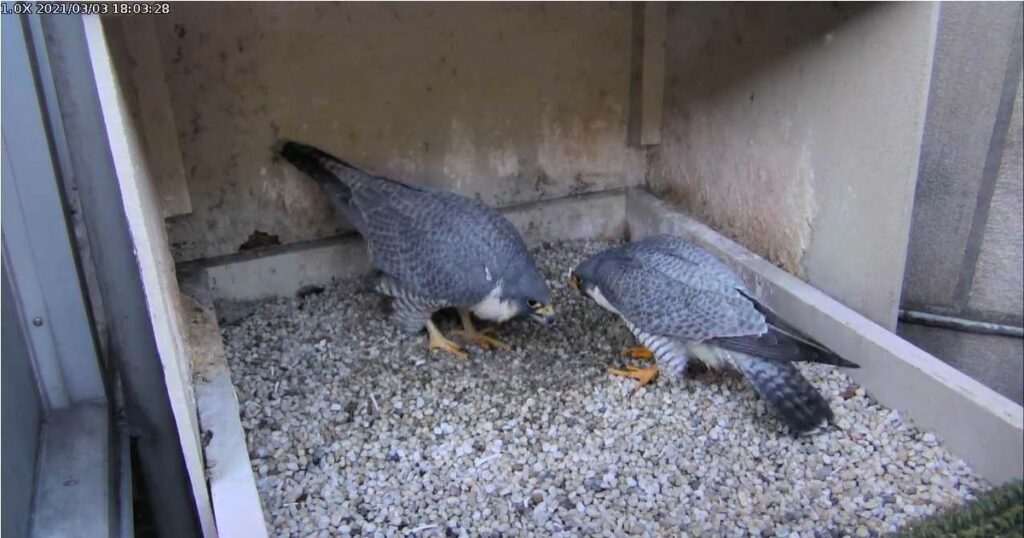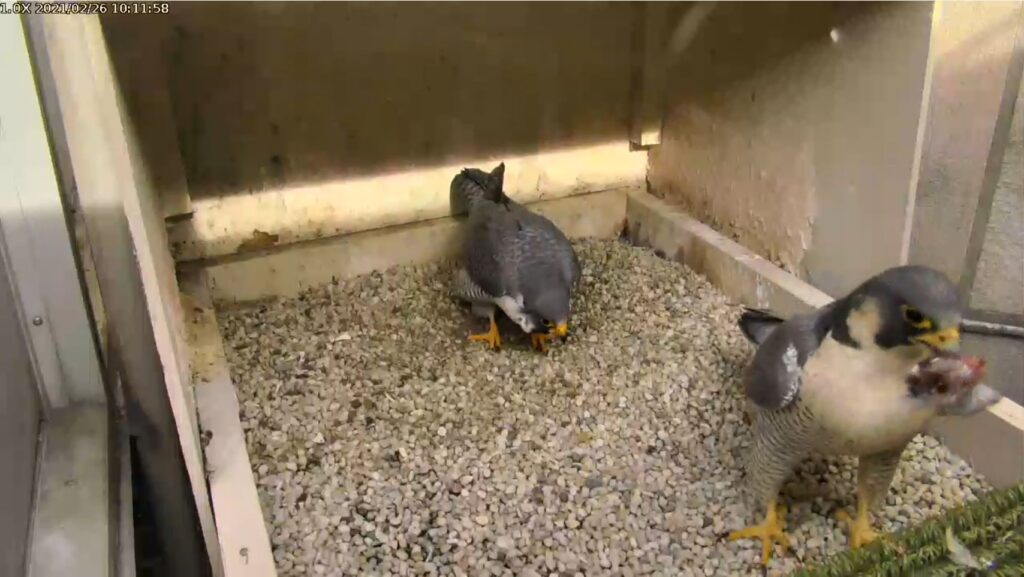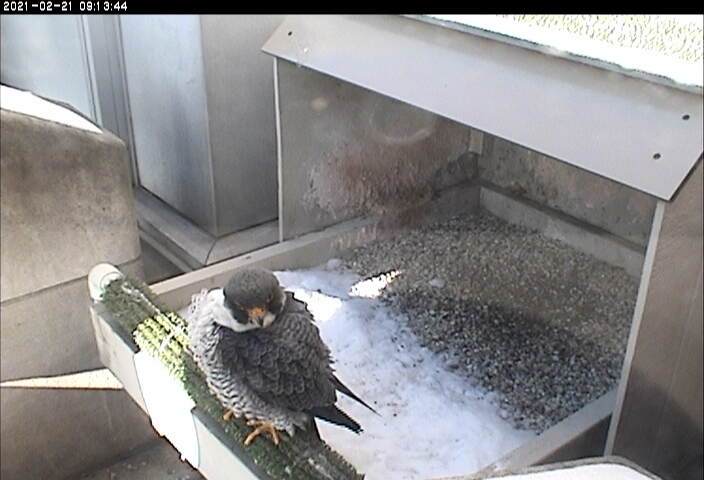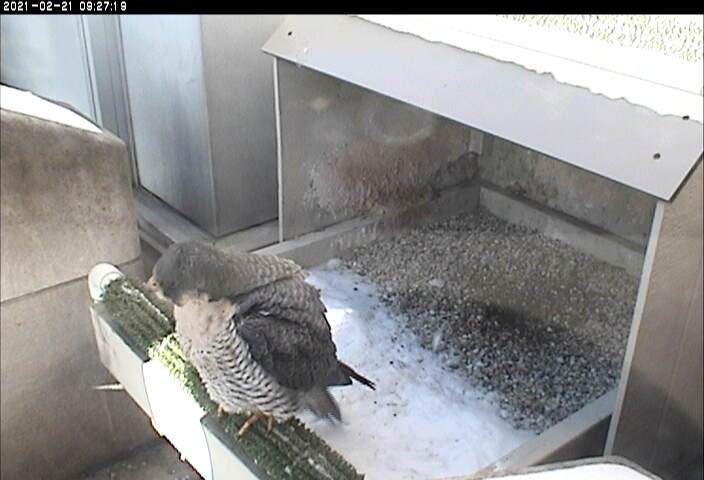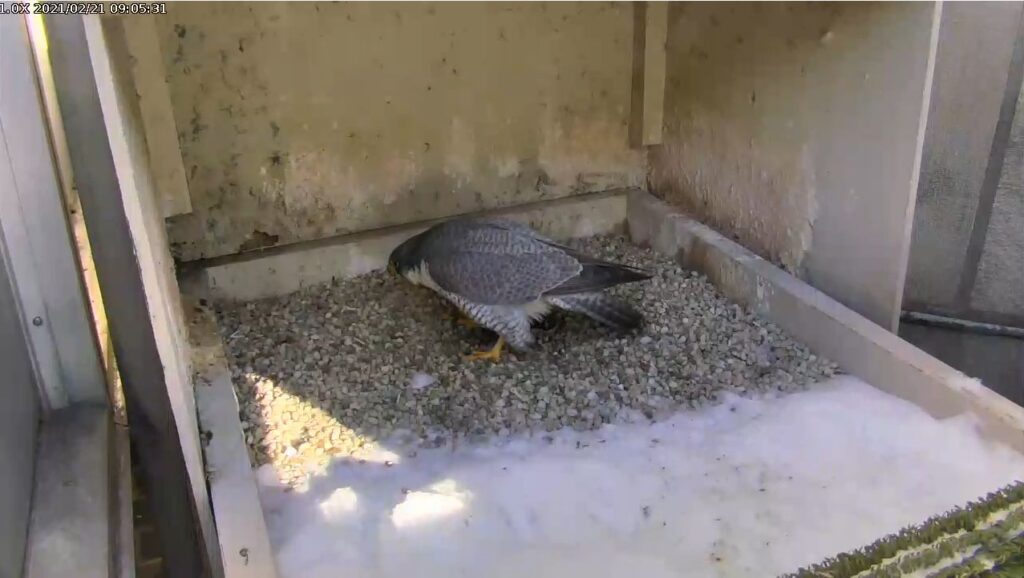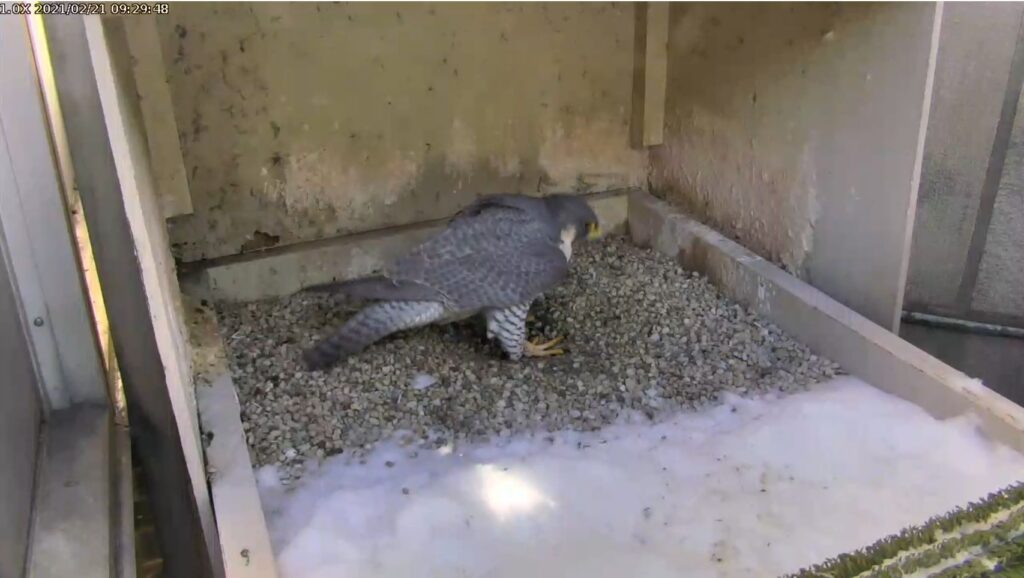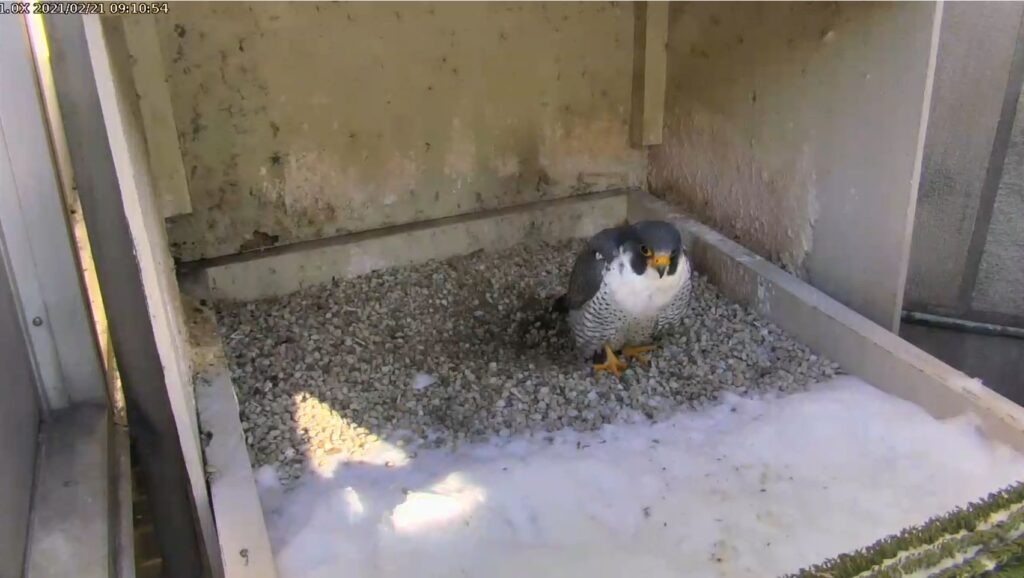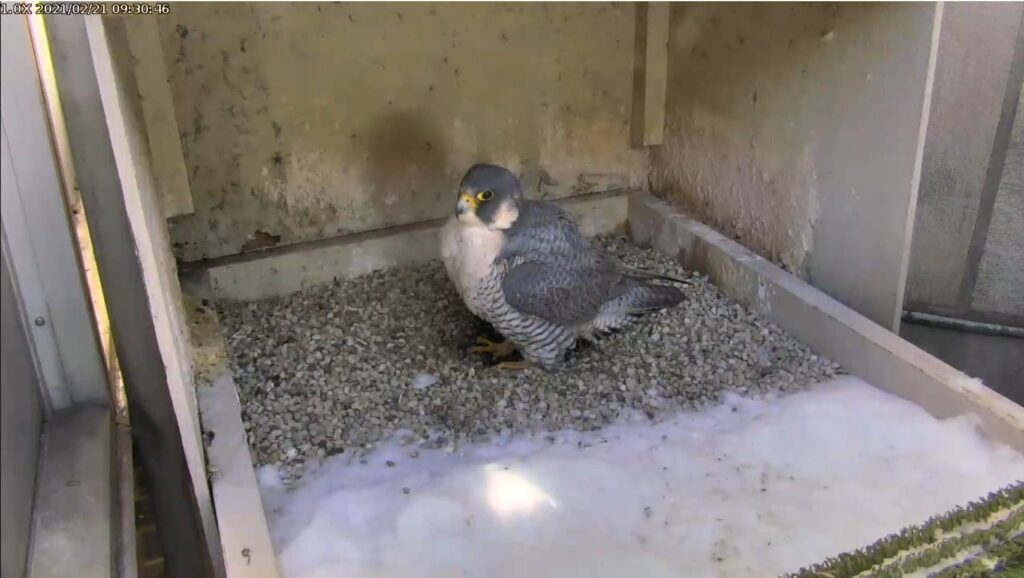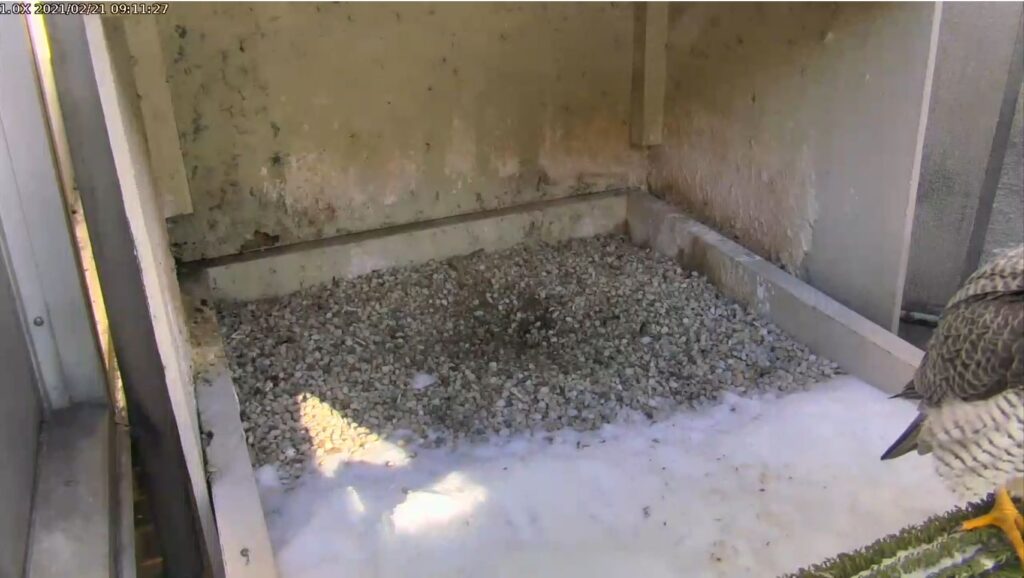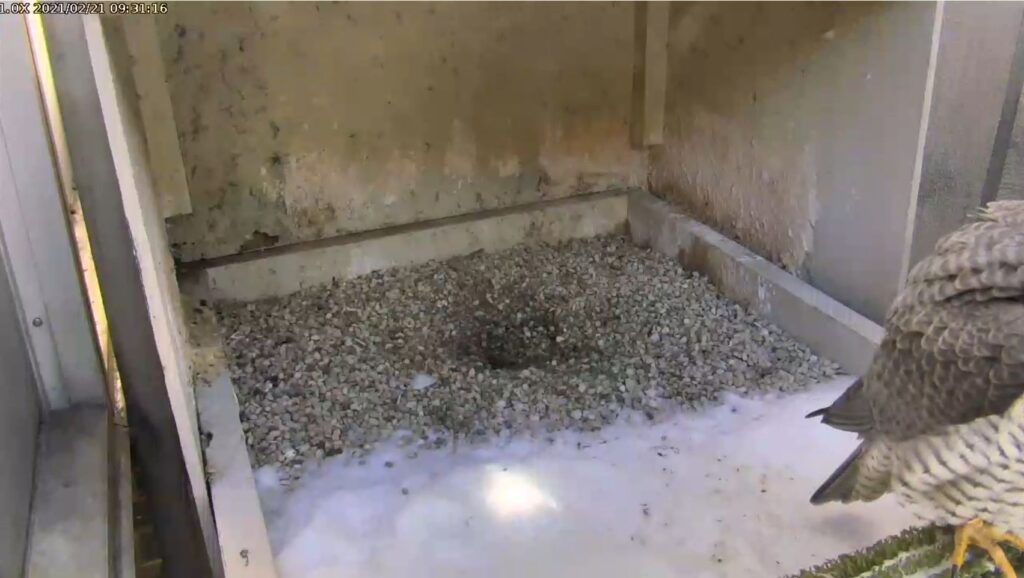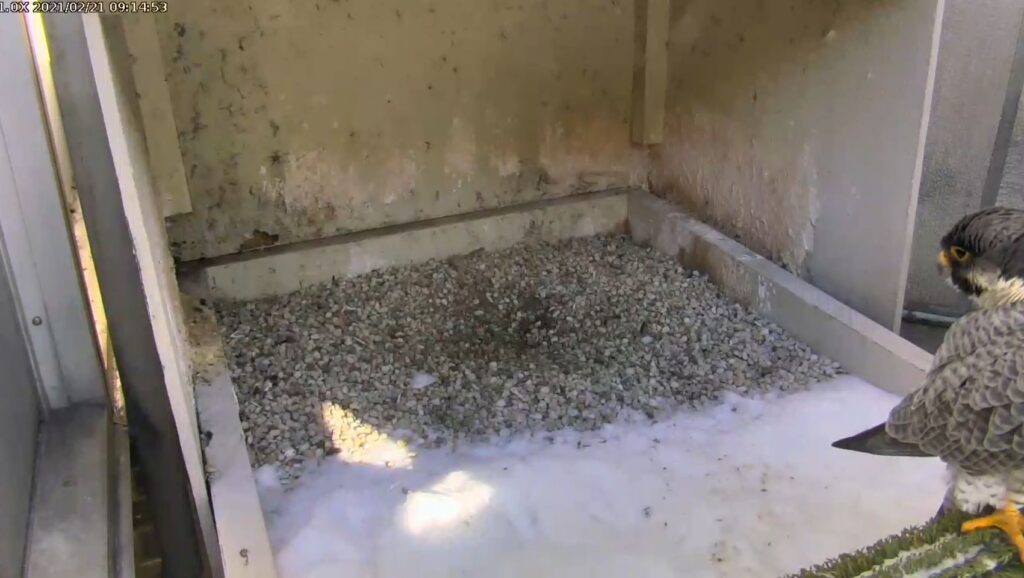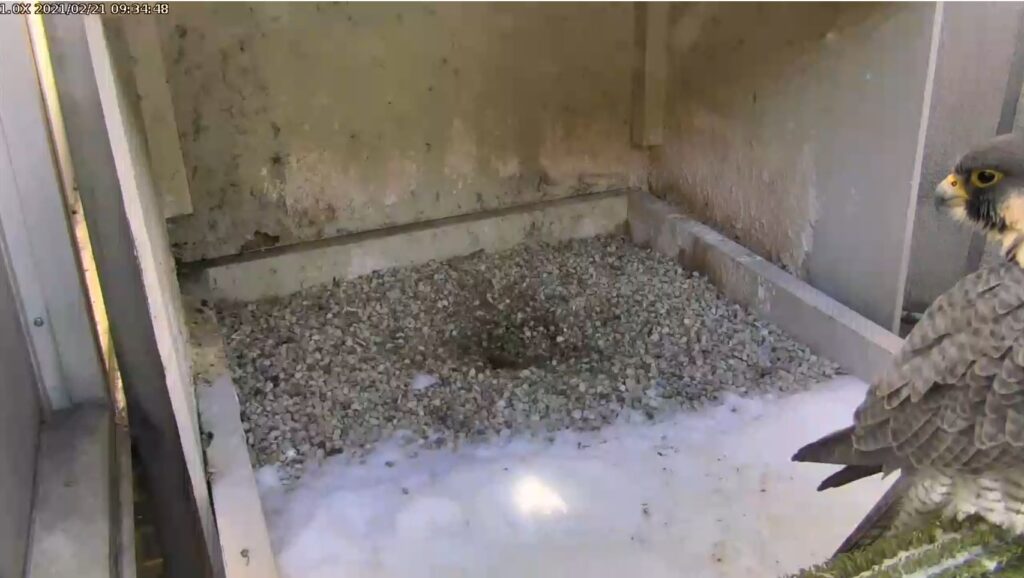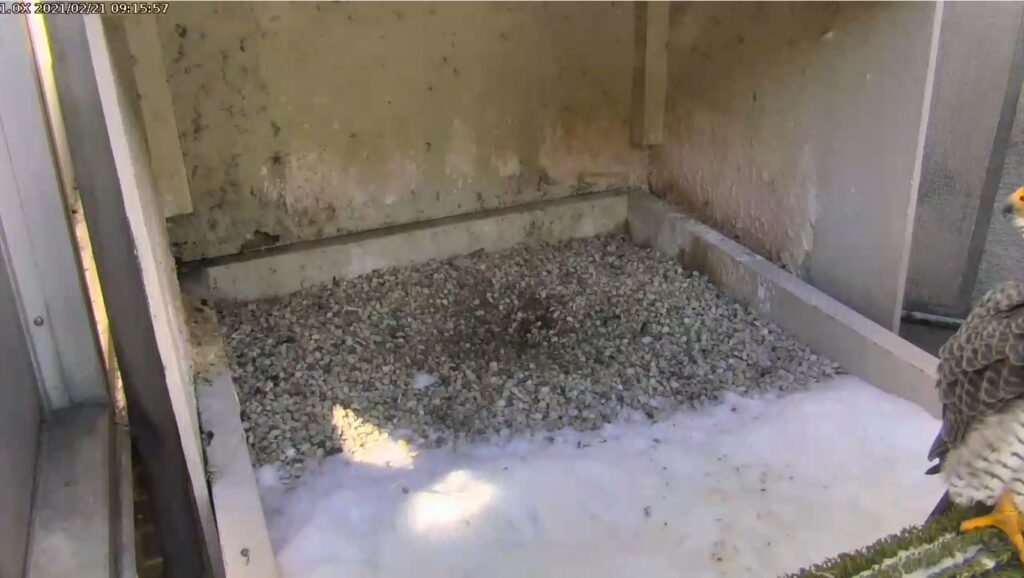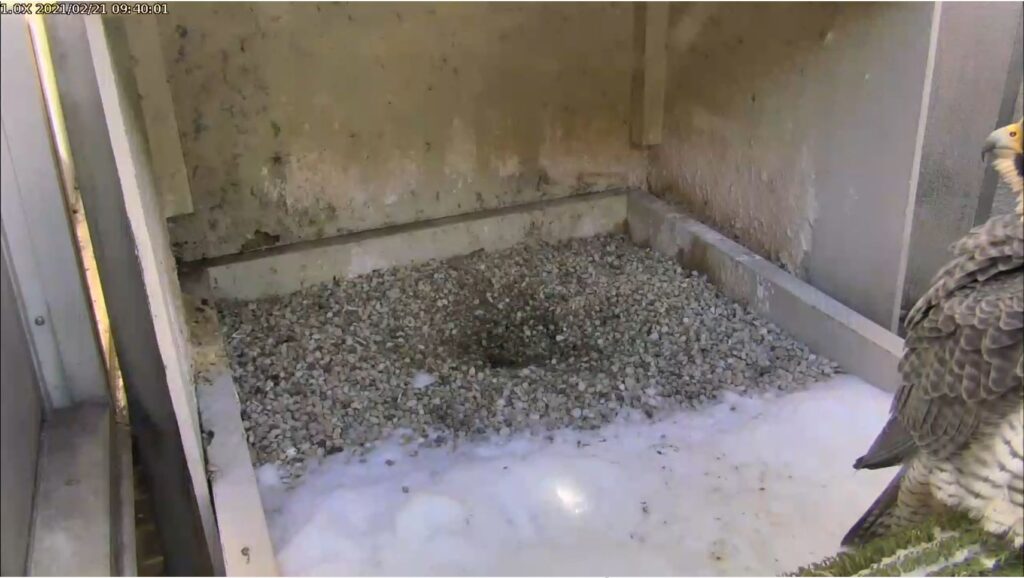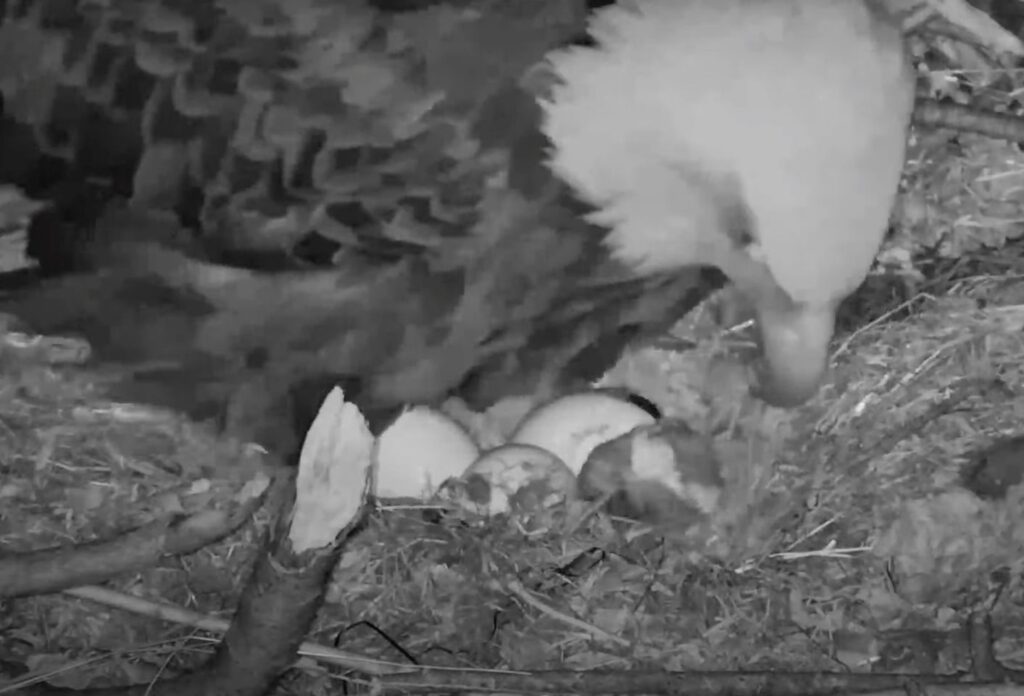
23 March 2021
This week’s events at two Pittsburgh raptor nests show us that bald eagles and peregrine falcons are on different schedules during the breeding season.
At the Hays bald eagle nest the first eaglet of 2021 hatched early this morning. Audubon of Western PA announced that the eaglet broke out of his egg overnight and emerged at 3am, 23 March 2021. The “baby picture” above is from the ASWP Facebook page.
Meanwhile at the Cathedral of Learning peregrine nest, 3.5 miles away, Morela laid her third egg yesterday morning. Peregrines typically lay 3-5 eggs so Morela may lay more. We won’t know until we see it.
The peregrine timelapse video below shows the adults may be incubating, though I wonder about Morela’s 90 minutes on the perch from 4p – 5:30p. If incubating has begun the hatch date will be a month from now, approximately April 20-24.
Interestingly, though the peregrines started nesting a month later than the eagles they will more than catch up in the end. The Pitt peregrine nestlings will fly at least a week before the Hays eaglets.
The Hays eagles schedule this year is …
- First eagle egg laid = 12 February 2021
- First eagle egg hatched, first chick = 23 March 2021
- First flight expected = guessing June 11 – 20
The Pitt peregrines’ schedule is …
- First peregrine egg = 17 March 2021
- First peregrine hatch (most will hatch on the same day) = approximately 20-25 April.
- First flight expected = guessing 30 May to 4 June.
Soon the Hays bald eagle nest will have active fluffy chicks while the Pitt peregrines will embark on The Big Sit. For the next month it will be more interesting to watch the eagles than the peregrines.
Follow the Hays bald eagles at Bald Eagles in Western Pennsylvania – Audubon Society of Western PA on Facebook. Watch them live at ASWP: Hays Nest.
Watch the Cathedral of Learning peregrines at the National Aviary falconcam at Univ of Pittsburgh.
(photo of first Hays eaglet from ASWP Pittsburgh Eagles Facebook page, video from the National Aviary falconcam at Univ of Pittsburgh)
